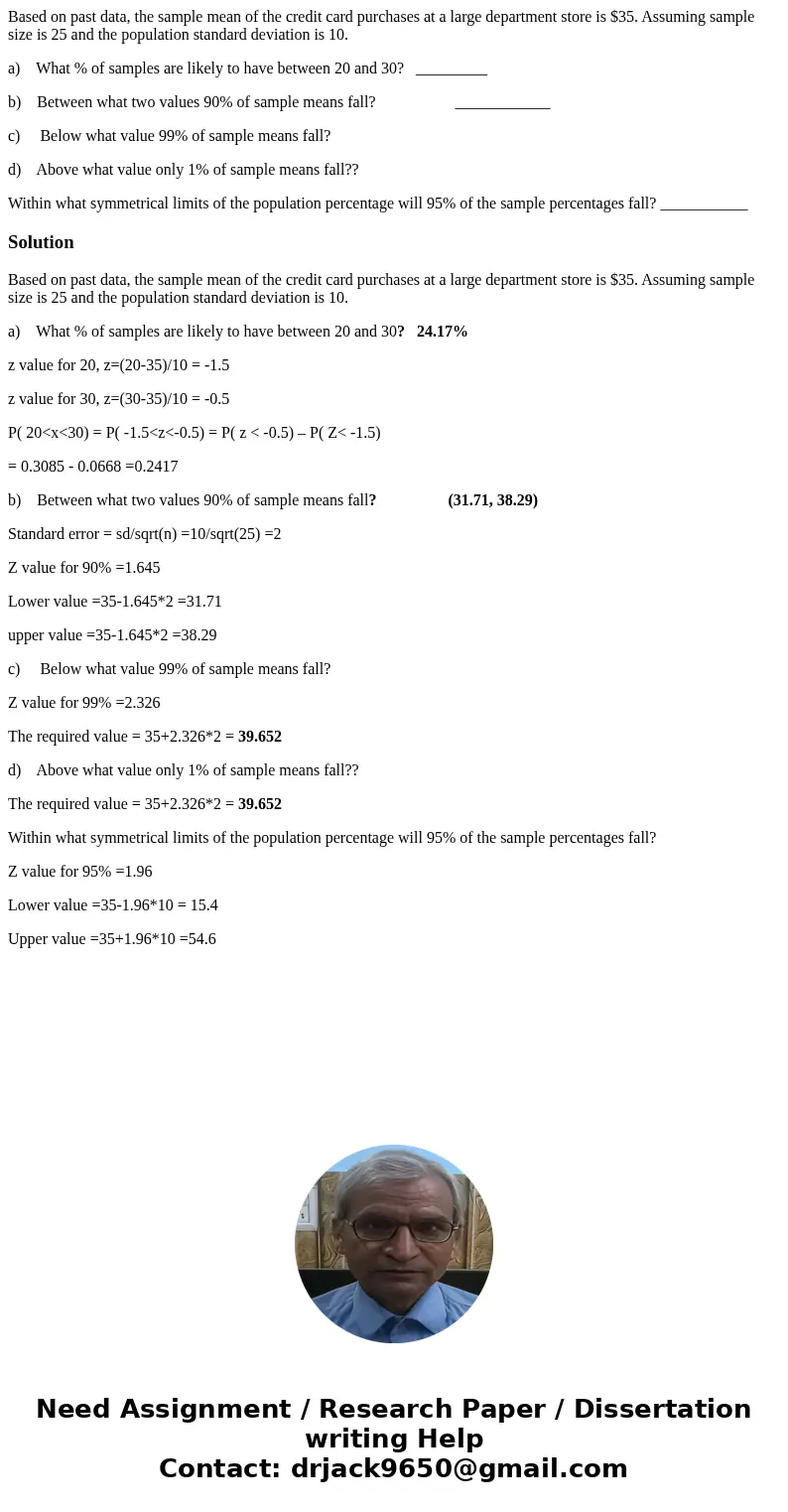Based on past data the sample mean of the credit card purcha
Based on past data, the sample mean of the credit card purchases at a large department store is $35. Assuming sample size is 25 and the population standard deviation is 10.
a) What % of samples are likely to have between 20 and 30? _________
b) Between what two values 90% of sample means fall? ____________
c) Below what value 99% of sample means fall?
d) Above what value only 1% of sample means fall??
Within what symmetrical limits of the population percentage will 95% of the sample percentages fall? ___________
Solution
Based on past data, the sample mean of the credit card purchases at a large department store is $35. Assuming sample size is 25 and the population standard deviation is 10.
a) What % of samples are likely to have between 20 and 30? 24.17%
z value for 20, z=(20-35)/10 = -1.5
z value for 30, z=(30-35)/10 = -0.5
P( 20<x<30) = P( -1.5<z<-0.5) = P( z < -0.5) – P( Z< -1.5)
= 0.3085 - 0.0668 =0.2417
b) Between what two values 90% of sample means fall? (31.71, 38.29)
Standard error = sd/sqrt(n) =10/sqrt(25) =2
Z value for 90% =1.645
Lower value =35-1.645*2 =31.71
upper value =35-1.645*2 =38.29
c) Below what value 99% of sample means fall?
Z value for 99% =2.326
The required value = 35+2.326*2 = 39.652
d) Above what value only 1% of sample means fall??
The required value = 35+2.326*2 = 39.652
Within what symmetrical limits of the population percentage will 95% of the sample percentages fall?
Z value for 95% =1.96
Lower value =35-1.96*10 = 15.4
Upper value =35+1.96*10 =54.6

 Homework Sourse
Homework Sourse